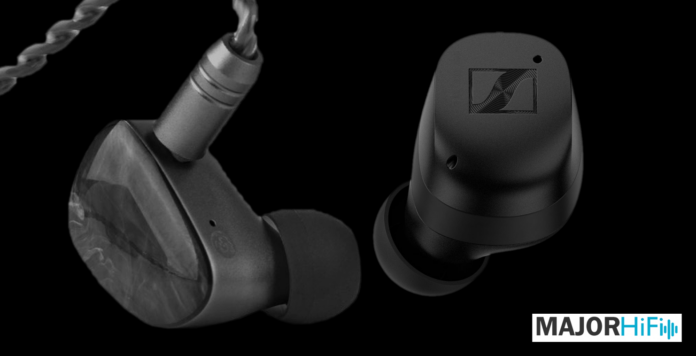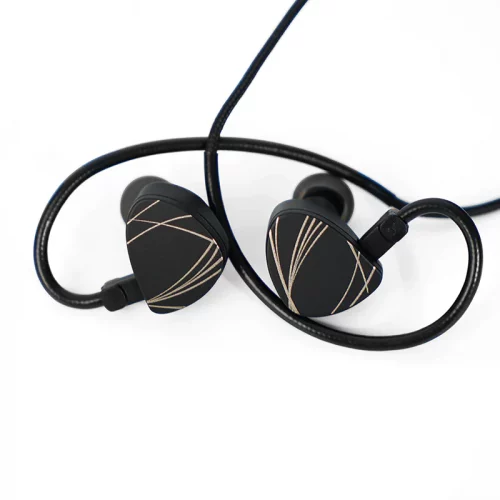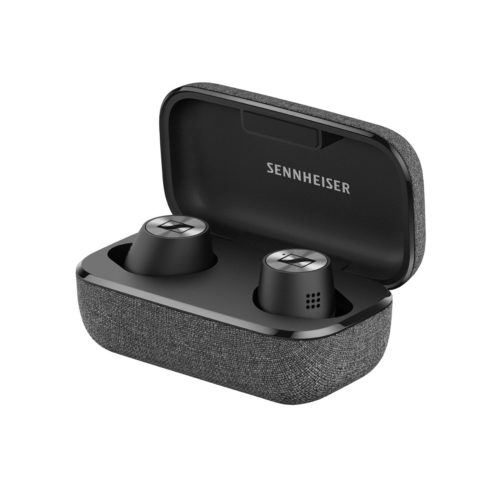Here on MajorHiFi, you can find a ton of reviews for IEMs and true wireless earbuds. There are tons of different models to choose from, and there are a large variety of brands to get to know. Some brands even carry both IEMs and true wireless earbuds. What is ultimately the best choice though? Are IEMs always better than Bluetooth earbuds? Earbuds are certainly more popular than IEMs, but people in the audiophile community prefer IEMs. Does it all have to do with sound quality? If you already own a pair of true wireless earbuds, are IEMs considered an upgrade? It’s not a simple yes or no answer, so let’s get into the specifics so you can more informed decision on if IEMs or earbuds work best for you.
The Pros & Cons For IEMs
When it comes to sound quality over every other aspect, you’re going to want IEMs. There are plenty of true wireless earbuds with good sound quality, including the Sennheiser Momentum True Wireless 3, and the Noble FoKus Mystique, but Bluetooth compression is the big difference maker. If you want to get the most out of lossless streaming services like Apple Music, or Tidal, then wired IEMs are the way to go. With a straight connection to your source via cable, you’re receiving a more direct signal. High-fidelity audio streams are better represented this way, although it does look like lossless Bluetooth CODECs may be close to a breakthrough.
Not all IEMs will have better sound. Like every product out there, you won’t get the same quality everywhere. You can get IEMs that are rather inexpensive like the Moondrop Aira, or Tripowin X HBB Olina that have a great sound for less than a hundred bucks. With IEMs, you also have different ways you can enhance their value, such as upgrading the cable or getting a DAC/Amp with a balanced connection. It can be fun to mix and match with different pairings to see what sounds better to you. Of course, this is just more money you would have to spend, but it’s also completely optional.
Bluetooth DAC/Amps
If you enjoy the freedom of Bluetooth, there are also Bluetooth DAC/Amp options like the iFi Go Blu or Fiio BTR 7 that you can use your IEMs with. You can also just ditch the wire completely and use something like the iFi Go Pods, or Fiio UTWS5 However, the downside to this would be losing sound quality through Bluetooth, which might make you consider just switching to earbuds anyway.
Pricing
Even though there are inexpensive IEMs out there like the ones mentioned, you’re going to have to spend a pretty penny if you want what is considered the best models on the market. Some of the best IEMs that I’ve heard cost more than three thousand dollars, like the Empire Ears Odin, or the 64 Audio Fourte Blanc. It’s all up to what your ear prefers, as each IEM still has its sonic quirks even in this price range. However, the best of the best will still more than likely be up in this premium bracket, which can be intimidating for someone who just wants a good-sounding pair of earphones to listen to.
The Pros & Cons Of Bluetooth Earbuds
The advantage that IEMs really have over Bluetooth earbuds is being able to hear your high-res music better. However, lossless Bluetooth CODECs are starting to pop up in the news, and if it finds a way to hit the mass market like lossless streaming, then the lines can be significantly blurred. If that’s in the near future, then what advantages do Bluetooth earbuds have over IEMs now? The main attraction would be noise-canceling. Not every pair of wireless earbuds have it, but it’s not uncommon. While some IEMs can have good natural isolation, nothing really beats the utter silence that great ANC can bring. For plane rides and other loud environments, IEMs cannot beat strong noise-canceling like what’s seen on Sony’s 1000x line.
Smartphone Integration
Most IEMs also do not have mics. With wireless earbuds, you can easily transition from your music to an incoming call easily. You can switch to a cable that does have a mic for your IEMs, but it might not always be the best quality. Wireless earbuds can also activate your voice assistant and is overall a better companion for your smartphone features. The simple, hands-free, quality-of-life changes like this might be enough to win you over. Add that to the fact that if you’re exclusively streaming your music through Spotify, which does not include lossless resolution yet, you might not hear the difference in sound quality in the first place with IEMs.
Battery
Most Bluetooth earbuds with good battery life last from around seven to eight hours. With charging cases, this gives you a good few days before you need to recharge the earbuds, but it depends on the model. You don’t have to worry about charging anything at all with IEMs, but it’s not the biggest issue. Although, I think many of us have been in a situation where our earbuds run out of battery on a commute, wish you just had wired earphones.
The Verdict
It all comes down to what you want your setup to be. If you want complete noise isolation and the overall best companion to your smartphone features, then wireless earbuds are the way to go. You sacrifice sound fidelity for sure, but the best wireless earbuds still might sound good to you if you’re not concerned with lossless quality. Not having a headphone jack on your smartphone won’t be an issue for you either. However, if you really care about having the best possible sonic performance from a mobile setup, you’re going to want IEMs. Apple Music and Tidal listeners will get more out of their music, although you will need to spend more on adapters. If money isn’t a problem, then mixing and matching different DAC/Amps, and cables can also make IEMs feel a bit more personalized to you.
Compare the ranking of various headphones, earbuds and in-ear monitors using our tools.
Discuss this, and much more, over on our forum.
---MAJORHIFI may receive commissions from retail offers.
















